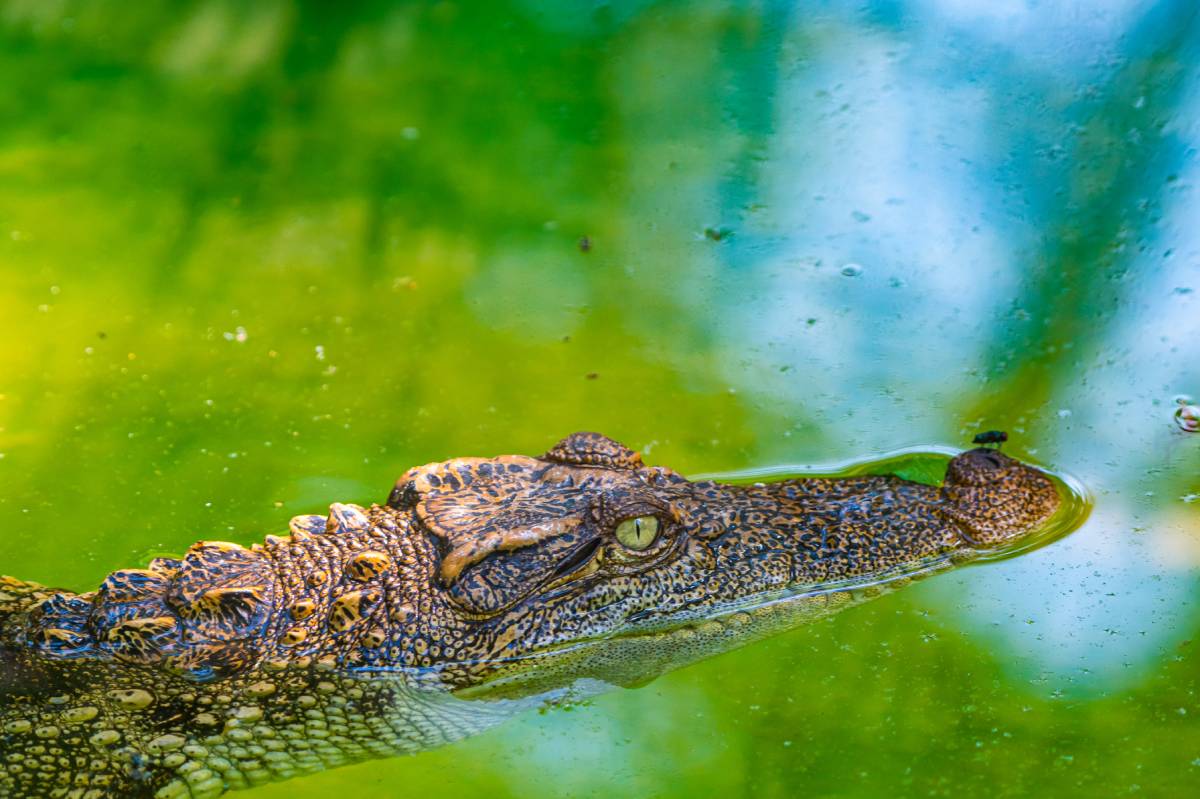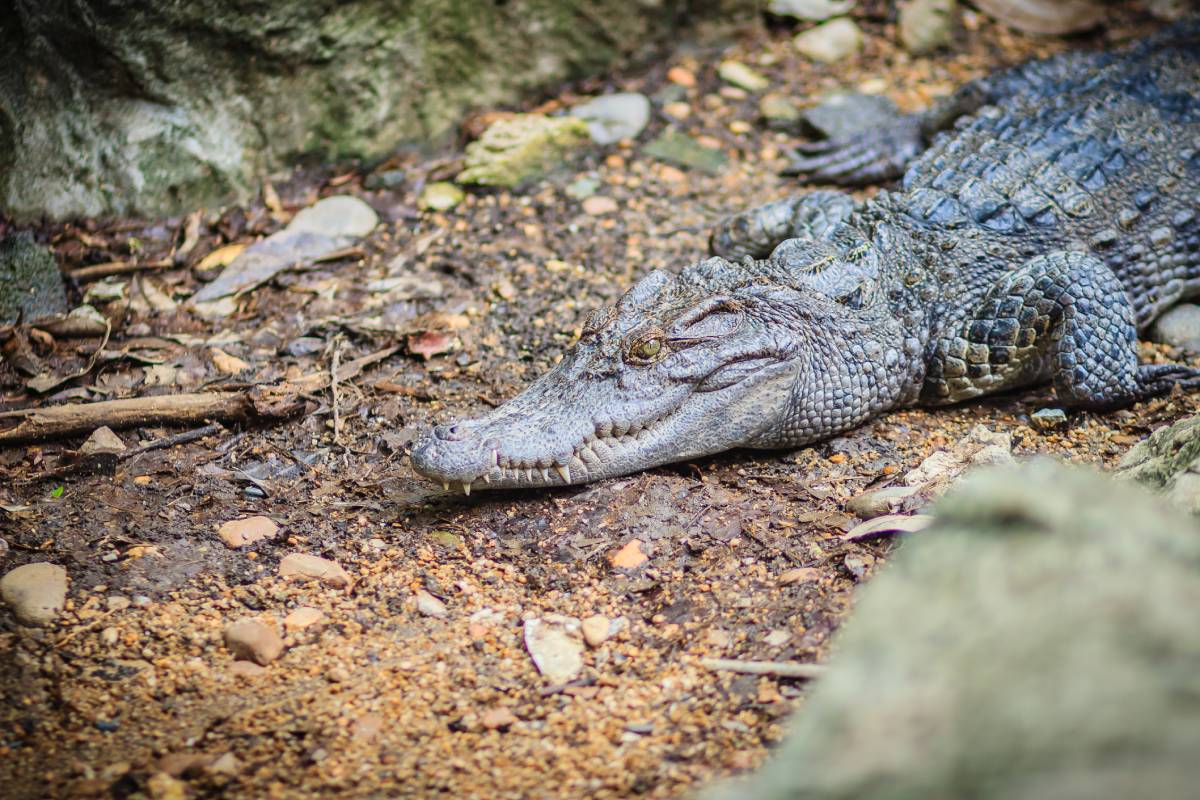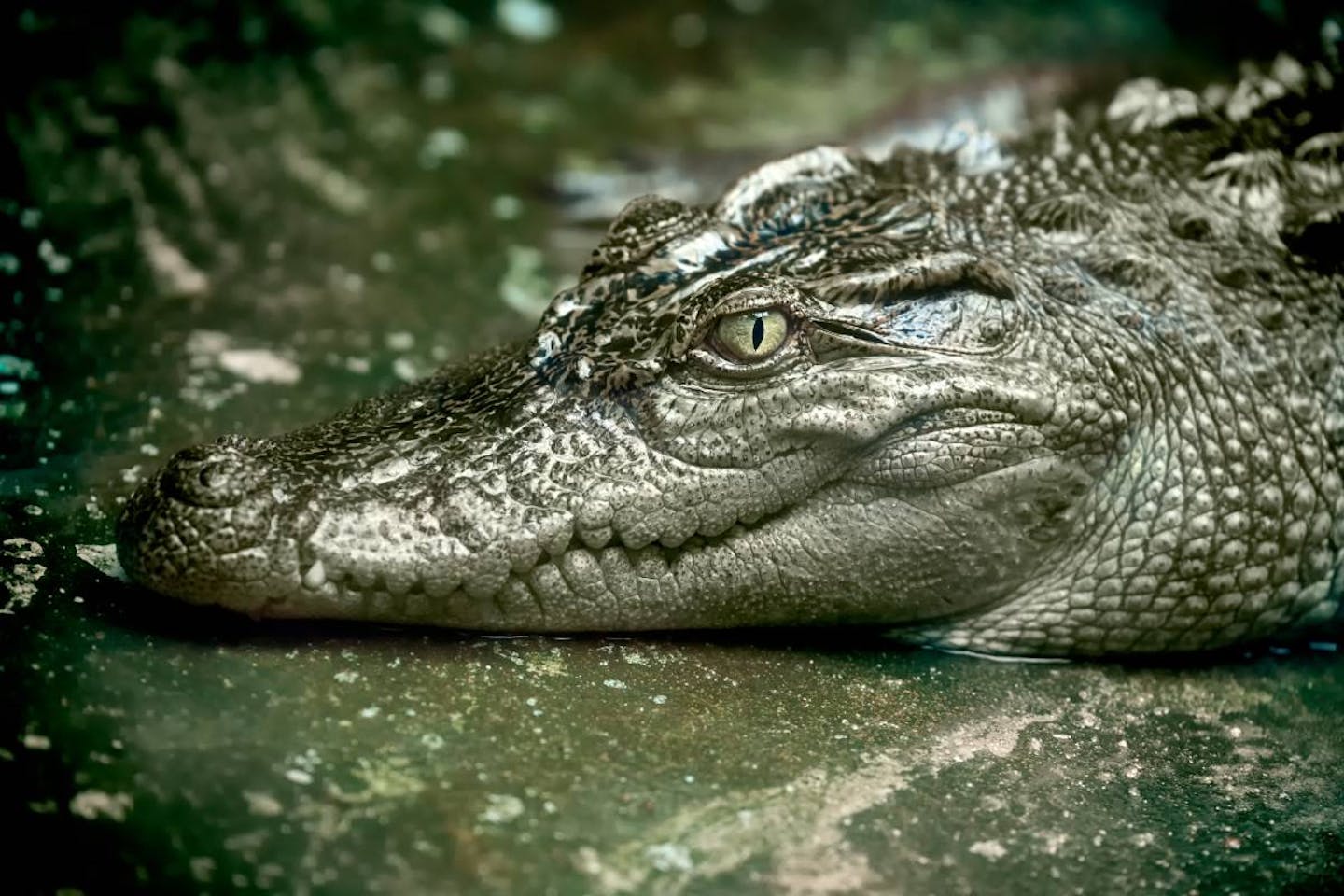The surprising story of rediscovering Siamese crocodiles in Southeast Asia
One Earth’s “Species of the Week” series highlights an iconic species that represents the unique biogeography of each of the 185 bioregions of the Earth.
For years, the dense jungles of the Cardamom Mountains in Cambodia and Thailand remained relatively unexplored, yet scientists knew the area was a biodiversity hotspot. In 2000, a survey led by Fauna and Flora International (FFI) was shocked to discover that one of the most threatened and least well-known crocodilians in the world was still flourishing in this region. Despite being driven out of 99% of its former range. It was the Siamese crocodile (Crocodylus siamensis).

Siamese crocodiles are the flagship species of the Cardamom Mountains Rainforests ecoregion, located in the Indochina Mixed Forests & Peatlands bioregion (IM12).
Hidden in plain sight
Once native throughout Southeast Asia, the Siamese crocodile is found in fragmented populations in Indonesia, Laos, Thailand, Vietnam, and Cambodia. A freshwater crocodile, it lives in wetland habitats, including slow-moving rivers, lakes, marshes, and swamps.
Medium in size compared to other crocodile species, Siamese crocodiles measure an average of 2.1 meters (6.9 ft) in length and weigh 40–70 kilograms (88–154 lb). The largest reached four meters (13 ft) in length and 350 kilograms (770 lb) in weight.
The species is distinguished by a prominent bony crest behind each eye at the back of its head and a broad, smooth snout. Dark to olive green in color, they are easily camouflaged in the waters and undergrowth of their rainforest habitat.

Balancing their ecosystem
While little is known about Siamese crocodiles' lifestyles, they mainly consume fish and snakes but also eat amphibians and small mammals. With this diet, it is thought that the crocodiles play the role of population control in their ecosystem.
Unlike the reputation of their crocodilian cousins as fierce attackers, Siamese crocodiles are generally unaggressive when not feeding. Many Malay folktales feature the crocodile outwitted by a mouse-deer or buffaloes. However, with a snout full of teeth, viewing their tranquility from afar is highly recommended.
%20-%20critically%20endangered%20species%2C%20native%20to%20Indochina%2C%20Southeast%20Asia.%20%20dreamstime11249159.jpg)
Parenting together
During the wet season, from April to May, the crocodiles breed. Females build mound-nests by scraping up mud and plant debris with their claws and lay between 15 and 50 eggs.
Both parents look after newly hatched crocs, unusual behavior in the reptilian world. After the hatchlings break out of their shells, the mothers carry them to the water in their jaws, with fathers on the lookout nearby.

Saving the species
Due to habitat degradation and fragmentation, in the early 1990s, Siamese crocodiles were believed to be extremely close to or entirely extinct in the wild. Over a decade later, a collaboration between the Government of Cambodia's Forestry Administration and scientists from FFI confirmed the presence of Siamese crocodiles in the Cardamom Mountains.
Since the initial survey in Cambodia, around 30 sites have been found to contain wild Siamese crocodiles throughout the country. Yet, the reports suggest that as few as 500 to 1,000 mature adults are left in the wild, making the species critically endangered.
While there are said to be an estimated one million Siamese crocodiles in captivity, most of these are hybrids, bred with other crocodilian species due to the lack of a pure population. Many conservation efforts are in the works and have proven successful.
In August 2011, a clutch of 20 Siamese crocodiles was hatched in Laos by The Wildlife Conservation Society (WCS). Pang Sida National Park in Thailand is reintroducing young crocodiles from their breeding program, and in September 2021, eight hatchlings were found in a wildlife sanctuary in eastern Cambodia.
Despite human invasion into their homelands, the Siamese crocodile was miraculously able to survive and adapt. Aware of their importance to the rainforest and the right to live on our shared Earth, now is the time to help preserve and further aid the comeback story of this species.
Support Nature Conservation


_female_head%20image%20credit%20Creative%20Commons%2C%20Charles%20J%20Sharp.jpeg?auto=compress%2Cformat&h=600&w=600)

